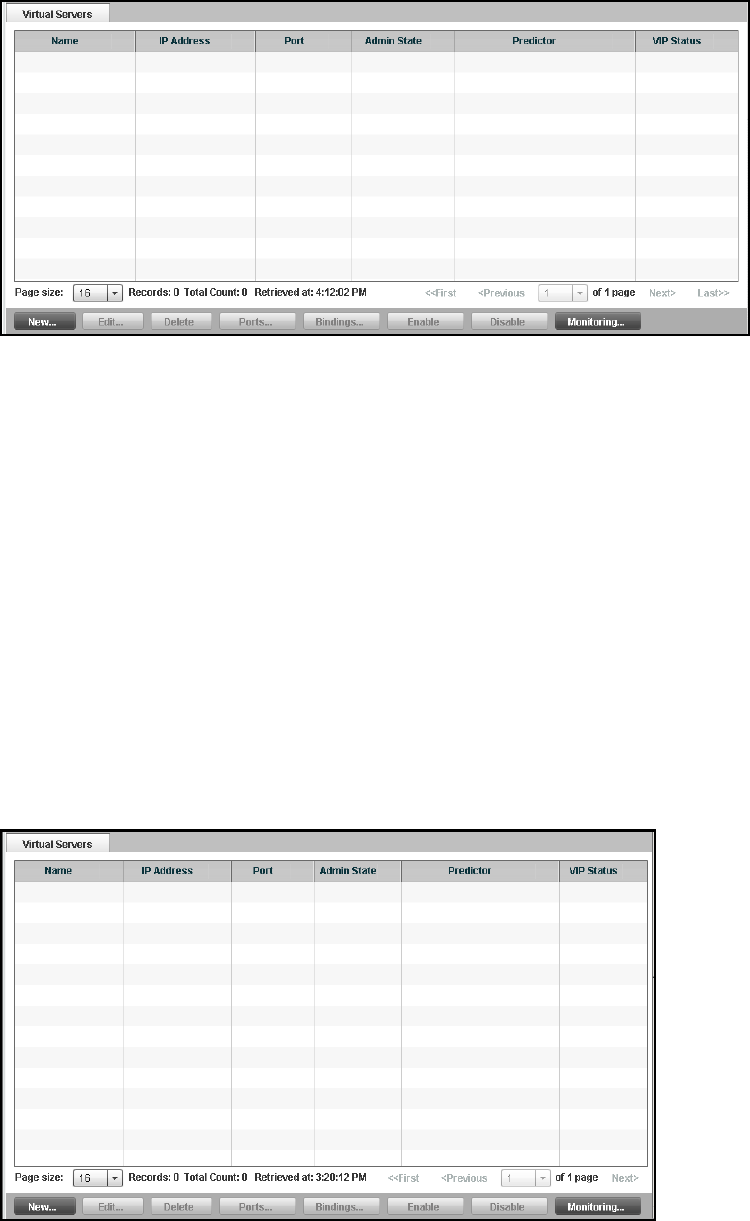(Supporting ADX v03.1.00) Owner's manual
Table Of Contents
- Contents
- Preface
- Introduction to the Brocade Virtual ADX Web Interface
- Navigating the Web Interface
- Navigating the Dashboard
- Configuration Overview
- System Settings
- Network Settings
- Traffic Settings
- GSLB Settings
- Security Settings
- Monitoring Overview
- Viewing System Information
- Viewing Network Status
- Viewing Traffic Statistics
- Viewing Security Statistics
- Maintenance Overview
- Managing Software Images
- Restarting the System
- License Management
- Packet Capture
- Accessing the CLI
- Retrieving System Information for Technical Support
- Troubleshooting
- Config Template XML Schema
- Managing Config Templates through the CLI

68 Brocade Virtual ADX Graphical User Interface Guide
53-1003242-01
Virtual servers
7
FIGURE 54 Virtual Server tab
3. Click the New button to navigate to the Virtual Server - new tab and configure a new virtual
server.
Creating a virtual server
A virtual server acts as a front end for the application server for distributing the service requests to
the active real servers. When a client sends a TCP or UDP requests to an application port in the
virtual server, the Brocade Virtual ADX identifies one of the back-end application servers (real
servers) based on the configured load balancing method and forwards the client request to the
identified server.
To configure a basic virtual server on the Brocade Virtual ADX, perform the following steps within
the Configure tab.
1. Click Traffic on the menu bar.
2. From the sidebar, select Virtual Server.
The Virtual Server page is displayed, as shown in Figure 54.
FIGURE 55 Virtual server










